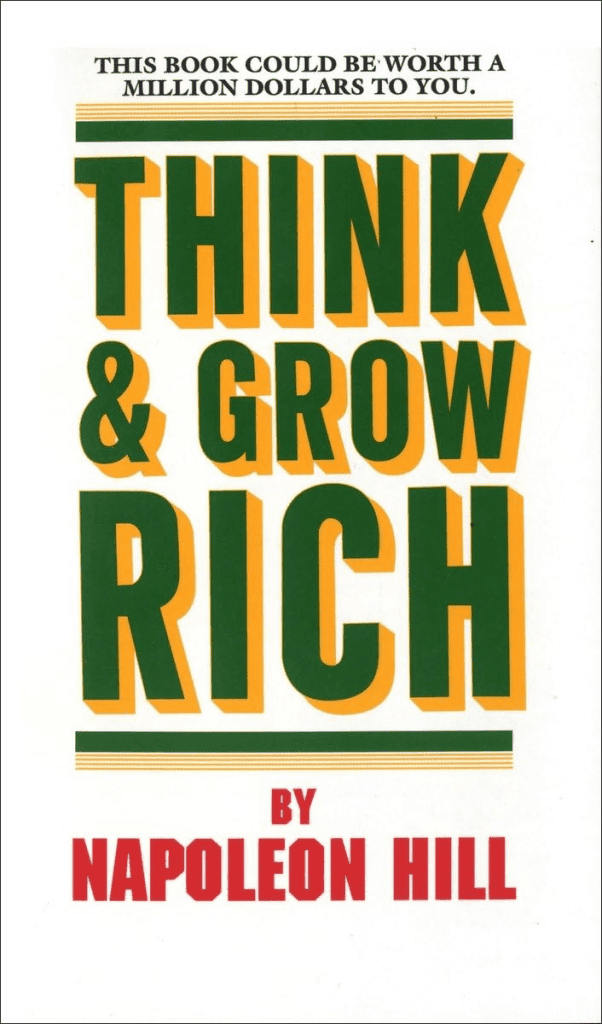Unlock steps to become a billionaire in 2025. Master wealth strategies, investments, and networking tips for financial success. Start building your fortune.
In 2025, there are exactly 3,194 billionaires in the world. Each one took a different path to reach this milestone. Some built tech companies, others invested in real estate, and a few inherited their wealth. But here’s what will surprise you: 72% of today’s billionaires are self-made.
The path to becoming a billionaire isn’t a secret formula. It’s a combination of strategic decisions, calculated risks, and persistent execution. In 2024, Jeff Bezos made $1.4 million per hour. Not from luck, but from years of building systems that generate wealth.
I spent five years studying the patterns of self-made billionaires. Their strategies aren’t complex. They’re systematic. Most follow similar principles: they build valuable assets, reinvest profits, and scale successful systems. Warren Buffett still lives in the same house he bought in 1958 for $31,500. His wealth comes from careful investment decisions, not lavish spending.
The difference between millionaires and billionaires is significant. A million seconds is 11.5 days. A billion seconds is 31.7 years. This puts into perspective the scale of wealth we’re discussing.
This guide breaks down the exact steps billionaires take. You’ll learn proven investment strategies, wealth preservation techniques, and the mindset shifts required for substantial wealth creation.
The path exists. The blueprint is clear. The question is: are you ready to follow it?
Let’s examine the specific steps that separate billionaires from everyone else.
Step 1: Adopt Strategies for Wealth Creation

- Set practical financial goals for clear direction.
- Craft a detailed plan to monitor and target growth.
Is it possible to become a billionaire? Yes. It requires clear strategies and consistent actions.
1. Set Clear Financial Goals
Setting clear goals is the first step. Define what you want financially, both long-term and short-term. Long-term goals might include retirement savings or a specific asset value. Short-term goals could be buying a property or paying off a loan. These goals give you direction and a timeline.
Goals should be achievable. The SMART method helps here. Make goals specific, like saving $5000 in six months. Ensure they are measurable. Track your progress. Relevance is key. Goals should fit your current situation and future plans. Time-bound goals drive urgency.
These financial objectives act like a map. They guide your actions and decisions, keeping your focus on wealth creation. This approach greatly improves your chances of success.
Is Becoming a Billionaire Realistic?
You might wonder if billionaire status is realistic. It is, but it requires work. The journey isn’t overnight. For most, it takes decades. The average billionaire builds wealth over 25 years or more. Patience and consistency are crucial.
Being a billionaire is rare. Only around 2,800 billionaires exist globally. But adopting solid strategies and having a hard-working mindset can set you on the path. Start by setting clear and specific goals.
2. Create a Detailed Financial Plan
A detailed financial plan turns goals into actionable steps. First, budget your finances. Know how money comes in and goes out. This helps track spending and saving. Use tools or apps for better monitoring.
Investing is key. Allocate funds to areas with growth potential. Stocks, real estate, and small businesses are options. Use expert advice where needed. Remember, “returns matter a lot,” as Abigail Johnson says. Choose investments that offer reliable returns. Reading about different billionaires’ strategies can reveal valuable insights.
Keep an eye on the market. According to data, the US500 stock index has varied in early 2025. Stay informed about such movements through platforms like Trading Economics. This awareness helps you make informed decisions.
Regularly review your plan. Adjust based on progress and changes in life circumstances. This adaptability keeps your path to wealth creation dynamic and resilient.
🪄 The average annual net worth growth rate among billionaires is approximately 11%.
Before we dive deeper into how to become a billionaire, it’s worth noting that this builds on some key principles of billionaire success. If you’re just getting started with the concept of becoming a billionaire or want to refresh your understanding, our comprehensive guide on Understanding Billionaire will give you the groundwork you need. For those already familiar, let’s continue exploring how to become a billionaire…
Step 2: Explore Innovative Investment Opportunities

- Diversify portfolio across different assets.
- Spot emerging markets with high growth.
- Stay informed about tech trends to invest wisely.
1. Diversify Your Investment Portfolio
Diversifying your investment portfolio is the bedrock of risk management. By spreading your investments across different asset classes, like stocks, real estate, and bonds, you reduce exposure to the volatility of any single investment. Start by assessing your current portfolio. Make sure it includes a mix of assets. This variety helps balance potential losses in one area with gains in another. Stocks can offer growth and dividends. Real estate provides stable, long-term appreciation and rental income.
Next, take into account market trends. Use market reports and financial news to understand where markets are heading. For example, if technology stocks are growing rapidly, you might consider increasing your exposure to that sector. Adjust holdings to reflect both current conditions and future forecasts. At the same time, consider your own risk tolerance. Younger investors can afford more risk, potentially investing more heavily in stocks. Older investors may prefer bonds for stability.
Track performance regularly. Many platforms offer tools to keep you informed about how each part of your portfolio is doing. This makes it easier to make informed decisions on whether to hold or sell certain investments depending on your goals and comfort with risk.
Portfolio Management Tools
Using digital tools can make diversification easier. Platforms like E*TRADE or Schwab offer dashboards that show your asset allocation.

These tools help analyze the balance between risk and reward. You can quickly see if you are overweight or underweight in a specific sector or asset type.
2. Learn About Emerging Markets
Emerging markets present unique opportunities for growth. These are often regions or sectors experiencing rapid economic development and industrialization. Countries in Africa, Asia, and South America show promise, offering avenues for high returns, albeit with higher risk. Start by identifying these markets. Look for indicators of growth such as population increases, economic reforms, and infrastructure improvements.
Next, focus on sectors within these markets with the most potential for growth. Fields like renewable energy, technology, and healthcare are expanding rapidly. Innovations in these industries often lead to new investment opportunities. For instance, consider technologies such as AI, blockchain, and electric vehicles. These sectors not only have growth potential but also tend to attract significant investment.
Allocate part of your capital to these sectors. Decide how much of your portfolio should be invested in emerging markets. This might be a small percentage initially, allowing you to explore with minimal risk. As you gain confidence, you can increase that share. Always stay updated with global market news. Understanding economic and political shifts helps in making well-informed decisions.
Stay Informed and Adapt
Knowledge is key. Follow financial news through reliable sources like the Financial Times or Bloomberg. These platforms provide insights into market conditions and emerging trends that can affect investments. If you want to know more about the unique paths to wealth in emerging markets, the Billionaire Success Stories might be useful.
3. Assess Technological Trends
Technology is a hotbed for innovative investment opportunities. Staying updated with technological advancements can provide a competitive edge. Start by researching emerging technologies. Identify those with the potential to disrupt existing markets. Analyze how these innovations are being integrated into businesses and industries. Follow companies investing in or developing new technologies.
Next, assess the impact of these technologies on existing sectors. For instance, explore how AI and machine learning are revolutionizing industries like finance, healthcare, and transportation. These advancements create new investment prospects and paths for growth.
Engage with tech investment communities. Join networks or forums where investors share insights and predictions about technology investments. Platforms like LinkedIn have groups focused on tech investments. Engaging with other investors gives you access to collective wisdom and potential leads on the next big opportunity.
Anticipate and Act
Technological investments require readiness to embrace change. Be proactive in sensing shifts within tech industries. Once a promising opportunity is identified, act swiftly to capitalize on it. If you’re curious about how billionaires manage investments, 2025’s Ultimate Billionaire Investment Secrets may offer further insights.
As you continue on this path, your investment strategy evolves. This requires constant learning and adaptation across sectors and technologies.
Step 3: Embrace Financial Freedom Principles

- Reduce debt and increase savings.
- Create passive income streams.
- Improve long-term financial stability.
1. Reduce and Manage Debt
Debt can be a heavy burden. To achieve financial freedom, focus on paying off high-interest debts first. These often include credit cards and payday loans. Interest from these can pile up quickly, so it’s smart to tackle them as soon as possible. Use the debt snowball or debt avalanche method to stay organized. The debt snowball targets the smallest debts first. This provides motivation as you quickly see results. The debt avalanche targets high-interest debts, which can save more money in the long run.
While reducing debt, it’s important to manage your income wisely. Creating a budget can help track your expenses. Allocate money towards essentials, debt repayment, and savings. Avoid the trap of only paying the minimum amount on debts; this stretches out the debt period, costing more in interest. Financial tools and apps can help track progress, automate payments, and set alerts for upcoming due dates. This ensures you never miss a payment, which can help avoid penalties.
Align Financial Goals with Debt Management
Align your financial goals with debt management strategies. Set clear, measurable goals for debt reduction. For example, aim to pay off your credit card within 18 months. This creates a sense of purpose and direction. Many successful individuals prioritize high-interest debts while continuously reassessing their financial situation. This aligned approach ensures steady progress.
2. Maximize Savings and Passive Income
Savings are the bedrock of financial security. Establish automatic savings plans with your bank. This ensures a portion of your income is consistently saved without relying on manual transfers. Set a specific amount, like 10-20% of your income, to go straight to savings. These funds can serve as a safety net for emergencies, reducing the risk of falling into debt again.
Creating passive income is another key to financial freedom. This is income that requires little to no effort to maintain. common examples are royalties and dividends. To start, invest in dividend-paying stocks or real estate that generates rental income. These investments can accumulate wealth over time. According to Warren Buffett,
“Never depend on a single income. Make an investment to create a second source.”
Warren Buffett
Diversifying income sources not only provides financial security but also opens doors to new opportunities.
How to Boost Passive Income Streams
Diversifying your passive income streams can further strengthen your financial standing. Consider learning about peer-to-peer lending, or creating and selling digital products. Each option comes with unique benefits and risks. Research thoroughly and consult experts if necessary. Establishing multiple income streams protects against market volatility and unforeseen changes.
Leading financial experts like Jim Rohn emphasize the importance of transforming income into capital and subsequently into an investment. This philosophy underscores the essence of financial freedom: turning active income into long-term assets that sustain your lifestyle over the years. When you reduce debt and building savings and passive incomes, you’re on a path to financial independence, paving the way for meaningful networking and other strategic moves.
Step 4: Focus on Networking with Industry Leaders

- Meaningful relationships boost success.
- Sharing knowledge expands opportunities.
- Effective networking grows wealth.
1. Build Meaningful Relationships
Attending industry events is a great way to meet people who can help you reach your goals. Whether it’s a conference or a seminar, these gatherings provide a platform to meet professionals who share your interests. Actively participate in events to make connections that might prove invaluable later. Prepare before attending by researching key speakers and attendees. This prepares you to engage in relevant conversations. Bring business cards and be ready to talk about your experience and goals.
Get to know your peers and mentors deeply. Genuine connections go beyond a quick chat. Follow up with people you meet by sending personalized messages or emails. Aim for regular catch-ups, whether over coffee or video calls. Such efforts foster trust and understanding and could lead to partnerships or mentorships. Never underestimate the power of a handwritten thank you note. It’s a small gesture that can leave a lasting impression.
Cultivating Trust with Industry Leaders
Trust is crucial in building meaningful relationships with industry leaders. Begin by showing commitment and delivering on promises. Consistency builds reliability. Don’t promise what you can’t deliver. Instead, focus on what you can contribute and follow through diligently. Communication is key. Keep your network updated about your progress, challenges, or any developments in your field. This keeps you on their radar.
2. Engage in Knowledge Sharing Platforms
Industry forums are excellent venues for exchanging ideas. They can be online or within specific organizations. Contribute your thoughts, ask questions, and provide feedback on topics within your expertise. Your active involvement demonstrates engagement and builds your reputation among peers. Moreover, forums often provide insights into industry trends and opportunities. Engaging in these discussions gives you a broader perspective on your field.
Leveraging social media can also boost your networking efforts. Platforms like LinkedIn are tailored for professionals. Share articles, comment on peers’ updates, and showcase your achievements. Regularly updating your profile reflects your career growth and keeps your network informed. Curate your feed to include industry updates, enabling you to stay current with trends and news.
Maintain Continuous Engagement
Continuous engagement in your network is crucial. Relationships need nurturing. Follow industry news and trends to stay engaging and informed. Offer to introduce contacts who might benefit from knowing each other. Be a connector. This positioning can make you an essential part of your network.
“Connecting is crucial for effective communication—it’s more about listening and adding value.”
John C. Maxwell
Keep an eye out for new and exciting projects among your contacts. Offer your assistance when relevant. This creates reciprocity and strengthens ties within your network. Be open to collaborations. These opportunities are stepping stones for larger ventures. Understanding the common habits of billionaires often includes maintaining strong networks to leverage various opportunities efficiently.
🪄 Research indicates professionals who frequently network are 30% more likely to receive job offers.
Advanced Tips for Wealth Creation

- Understand and act on global economic changes.
- Foster a mindset ready for entrepreneurship.
- Implementing advanced wealth strategies.
Evaluate Global Economic Trends
Understanding the global economy is key. Start by analyzing any major political shifts. They often have profound effects on markets. Economic trends may look complex, but they provide hints about where to place investments. To unlock market potential, watch financial news closely and identify changes that might hint at new opportunities.
Staying ahead of global adjustments is vital. One useful method is scenario analysis. This tool prepares you for possible future states of the world. Using scenario analysis, you can test how different strategies perform under various global conditions.
Take a look at Thomas Friedman’s books like “The World Is Flat: A Brief History of the Twenty-first Century“ for insights into globalization. It provides perspectives on how global economic dynamics can shape wealth strategies.

Don’t overlook the impact of cultural differences on economic trends. Each region shows its unique market behavior influenced by social norms and cultural values. This knowledge can direct a more tailored approach to global economics.
For advanced insight, consider “Cross-Cultural Management: Essential Concepts” by David C. Thomas. It helps understanding how culture influences economic decisions and trends.

Cultivate an Entrepreneurial Mindset
An entrepreneurial mindset involves the ability to pivot. Stay open to recognizing opportunities where others see problems. This mindset will foster innovation and open doors to lucrative ventures. Commit to lifelong learning, as the expansion of knowledge is crucial for recognizing different paths.
Books like “Think and Grow Rich” by Napoleon Hill offer timeless lessons on mindset.

Knowing when to embrace risk and when to retreat is crucial. Cultivating this mindset involves distinguishing between calculated risks and reckless gambles. This involves understanding every risk’s full implications, backed by detailed research. “The biggest risk of all is not taking one,” echoes Mellody Hobson’s sentiment on the value of risk.
Resilience is another central feature. You must learn from failures and use them to your advantage. They offer valuable lessons and strengthen your strategic approach to future endeavors. Conferences, boot camps, and workshops can be excellent resources. They offer potential places to network and learn from successful entrepreneurs. For more on resilience’s role in wealth creation, Tony Robbins’ “Unshakeable” provides strategies to endure setbacks and maintain momentum.
Optimize Tax Efficiency
Tax efficiency is often overlooked but can protect a significant portion of income. Familiarize yourself with the tax laws in your country and others. This knowledge will provide strategic tax-saving investments. Maximize contributions to retirement accounts and employ tax-efficient funds.
Books like “Tax-Free Wealth: How to Build Massive Wealth by Permanently Lowering Your Taxes ” by Tom Wheelwright offer deep insights into legal tax avoidance methods.

Set up and manage trusts wisely. They shield wealth and provide legacy benefits. Estate planning must consider current laws, but consulting with tax professionals ensures updated approaches. Reflecting on Benjamin Graham’s idea “In the long run, it is a weighing machine” applies here. Tax efficiency weighs financial performance over time.
Offshore accounts and diverse tax domiciles can optimize tax performance. Legal experts should guide you, ensuring compliance while maximizing benefits. Keep in mind that the regulatory environment can change. Regular consultation with financial advisors is critical to maintain tax efficiency.
Leverage Technology for Wealth Building
Technological advancements are reshaping investment landscapes. Platforms offering algorithmic trading are becoming popular. Automating trades can save time and take advantage of market shifts. Some online platforms also offer robo-advisors, integrating machine learning with portfolio management.
Books like “The Singularity is Near” by Ray Kurzweil discuss potential technological impacts on different industries.

Cryptocurrencies represent another area for wealth building. Understanding blockchain technology offers an edge. Bitcoin’s popularity and Ethereum’s smart contracts provide diverse investment prospects. Evaluating this technology calls for a robust understanding of risks and potential volatility.
Incorporate analytics tools that provide data-driven insights. Track key performance indicators and align them with your financial goals. Regularly upgrading skills in data analysis creates an advantage in investment decision-making.
For deeper understanding, resources like “Data Science for Business” by Foster Provost provide practical examples on applying analytics in wealth creation.

Foster Strategic Partnerships
Collaborate with complementary businesses helps share resources and broaden market reach. Partnerships minimize costs and increase market presence, offering mutual benefits. Strategic alliances support access to new markets and technologies, shortening your timeline to goals.
Reference points like “Built to Last” by Jim Collins illustrate how exceptional companies thrive through strategic collaborations.

Take, for example, Elon Musk’s partnership model. Musk aligns his goals with those of others, reaping shared benefits. Establish partnerships that align with your strategic objectives. This principle widens your network and boosts leverage. A partnership should offer scalability and foster quicker growth compared to a solo approach. This pathway speeds up growth and should be explored with due diligence.
Implement mechanisms for regular collaboration. Meet frequently to align goals and secure continuous progress. Anticipate growth patterns and adapt strategies with the insights gathered. Over time, such interactions build trust, opening doors to more profound opportunities.
Troubleshooting Common Challenges in Wealth Building

- Manage risks to protect investments.
- Plan for setbacks to keep financial goals intact.
- Seek advice to aid recovery and growth.
Navigating Market Volatility
Understanding market volatility is crucial. It impacts your wealth-building journey. Market volatility refers to the rapid and unpredictable changes in asset prices. These fluctuations can either increase wealth or reduce its value quickly. Managing this risk effectively is essential.
Develop Risk Management Strategies
- Understand Your Investments: Know what you are investing in. This will help you assess potential risks. Remember Warren Buffett’s words: “Risk comes from not knowing what you are doing.”
- Diversify Your Portfolio: Spread out investments across different assets. Include stocks, bonds, real estate, and other options. Diversification minimizes the impact of a poor-performing asset on your overall portfolio source.
- Use Risk Assessment Tools: Implement tools like Value at Risk (VaR) and stress testing. These tools measure the potential loss in your portfolio due to market changes.
- Set Clear Risk Tolerance Levels: Identify how much risk you’re willing to take. This helps guide investment decisions. It also ensures you’re not making impulsive choices based on market shifts.
Use Financial Instruments to Hedge Investments
- Learn About Options and Futures: These are contracts that allow you to buy or sell an asset at a specified price in the future. Options give you the right but not the obligation to buy or sell. Futures bind you to the contract terms.
- Explore Index Funds and ETFs: These funds track indexes and provide broad market exposure. They can reduce specific stock risk while allowing participation in market growth.
- Consider Protective Puts: This involves buying options that allow you to sell a security at a pre-set price. It shields against significant declines in the asset’s value.
- Monitor Volatility Indicators: Use these to anticipate market fluctuations and adjust your strategies accordingly. Staying informed about volatility helps in making timely decisions.
Dealing with Setbacks
Setbacks are a common part of wealth building. They might arise from market downturns, economic crises, or personal financial losses. Implementing a strategy to manage setbacks ensures you remain resilient and motivated.
Implement Fallback Plans for Financial Crises
- Establish an Emergency Fund: Create a savings pool to cover at least six months of expenses. This prevents forced asset liquidation during tough times.
- Adjust Your Budget: Cut unnecessary expenses during crises. Focus on essentials to maintain liquidity. Reallocating money in times of need is vital.
- Review Investment Goals: Temporarily altering long-term wealth goals is sometimes necessary. It guarantees that ongoing challenges do not derail your overall financial plan.
- Secure Alternative Income Streams: Evaluate other ways to generate money, like part-time gigs or freelancing. Multiple income sources cushion against primary income loss.
Seek Professional Advice for Recovery Paths
- Consult Financial Advisors: They can offer strategies to recover from setbacks. Input from experts, who are versed in wealth management and economic trends, can be invaluable.
- Engage in Financial Literacy Programs: Regular learning empowers you with knowledge on handling future setbacks. It reduces dependency on external experts and builds confidence.
- Join Wealth Management Forums: Engage with peers and experts. They often share insights on financial recovery strategies. This communal learning can provide novel solutions.
- Adopt Long-term Perspective: Remember that setbacks are temporary. A long-term view helps maintain focus on overall wealth goals despite short-term challenges.
Navigating financial challenges requires commitment. Stay proactive and informed. Keep seeking advice to ensure a smooth journey to building wealth.
Further Resources and Reading for Aspiring Billionaires

- Tap into diverse strategies to boost wealth creation.
- Learn investment options available today.
- Understand how financial literacy prevents poor choices.
Exploring Wealth Creation Strategies
Reading is foundational.
For starters, grab a copy of “The Millionaire Next Door” by Thomas J. Stanley and William D. Danko. This book unpacks the habits of wealthy individuals and provides insights into living below one’s means.


Another essential is “Secrets of the Millionaire Mind” by T. Harv Eker, which dives into the mentalities that differentiate wealthy minds from average ones.
Explore online articles and resources that discuss the habits of successful individuals. Platforms such as LinkedIn provide access to posts and articles from successful financial advisors. You can follow experts like Warren Buffett and Ray Dalio for their insights on wealth-building habits.
Understanding Investment Opportunities
Gaining knowledge in investments is essential. Courses that cover financial markets on platforms like Coursera or edX equip you with a deep understanding of market dynamics. For a broader range of knowledge, consider mainstream documentaries like “Inside Job” or “Enron: The Smartest Guys in the Room” which reveal the intricacies of investment landscapes.
Diversification remains crucial in 2025. Balancing between stocks, real estate, and alternative investments can help manage risk and maximize returns. With 55.8% of billionaires being self-made, investing in sectors with growth potential is a proven path to success.
Importance of Financial Knowledge
Understanding finance is like having a map in a complex landscape. It helps navigate risks and make informed choices. Financial literacy protects against decisions that may lead to significant losses. It also enables one to exploit opportunities that others might overlook.
Resources such as free online courses offered by leading institutions teach key principles of finance. Engaging in forums like Reddit’s personal finance subreddit can provide community insights and peer advice. Building this knowledge is not just about preventing debt; it’s about paving the way to smarter wealth management.
Evaluating Risks in Investment
Evaluation of risk is as critical as finding opportunities.
Books like “Against the Gods: The Remarkable Story of Risk” by Peter L. Bernstein delve into managing uncertainty. Risk management can be approached as a practice, not just a concept.

Regularly rebalancing your portfolio, as financial experts suggest, ensures alignment with your goals and risk tolerance.
Assessing geopolitical risks is imperative. Members of a diversified portfolio may include emerging market assets which naturally come with heightened risks. Join investment communities online, where spontaneous discussions often highlight potential new risks or shifts in trajectories.
Leveraging Networks for Knowledge and Growth
Building a network offers strategic advantages. Engaging with professionals from various industries can open doors for partnerships, collaborations, or insights that you may not have the exposure to otherwise. Participating in wealth management forums extends your perspectives on multiple strategies.
Networking must be active. Attend seminars, webinars, and exclusive events where key players meet. Learning from how billionaires like Elon Musk or Jeff Bezos engage with networks provides inspiration on maintaining valuable connections. Continuous interaction within these circles strengthens your own understanding and acts as a catalyst for innovative ideas.
These topics form a foundation for further exploration in the quest to become a billionaire. Soak in wisdom from varied resources, leveraging them for personal and professional growth.
🪄 The top 1% is responsible for around 45% of global wealth.
Conclusion
The path to becoming a billionaire in 2025 requires calculated decisions, constant learning, and strong execution. Your success depends on how well you mix smart investments, risk management, and relationship building.
A clear financial strategy is your foundation. Start with saving and investing regularly. Then, expand into diverse assets like stocks and real estate. Keep learning about emerging markets and new technologies – they often create paths to significant wealth.
Remember that most billionaires didn’t get there alone. Build real connections with industry leaders. Join high-level business groups. Share knowledge freely, and learn from others’ experiences.
Stay prepared for market changes and setbacks. They’re normal parts of the wealth-building process. When challenges come, use your knowledge and network to find solutions.
Your next step is simple: pick one strategy from this guide and implement it today. Maybe it’s starting an investment account, or reaching out to a potential mentor. Small actions, done consistently, lead to big results.
The road to becoming a billionaire is complex but clear. With dedication, smart planning, and persistent action, you’re moving in the right direction.


Leave a Reply